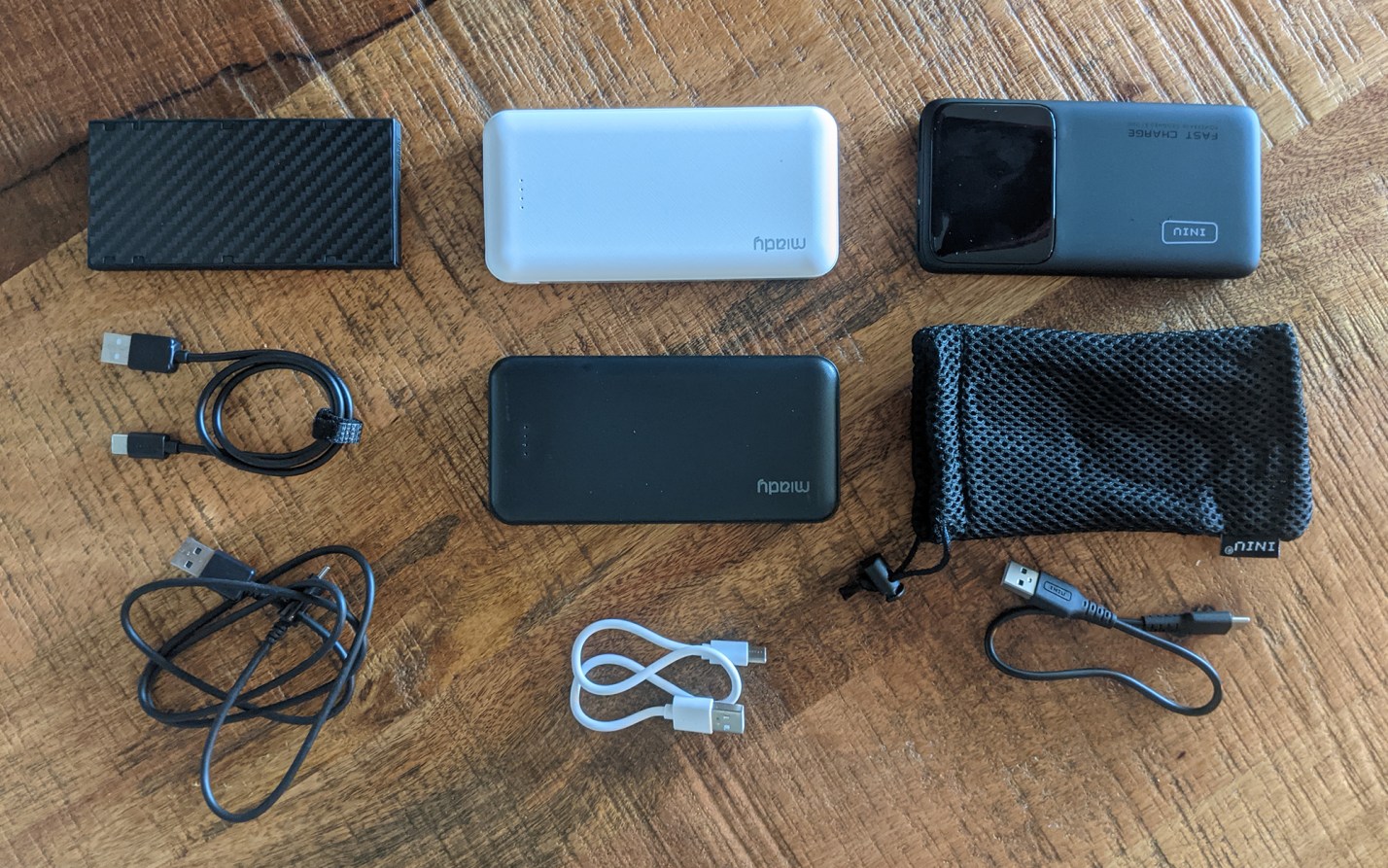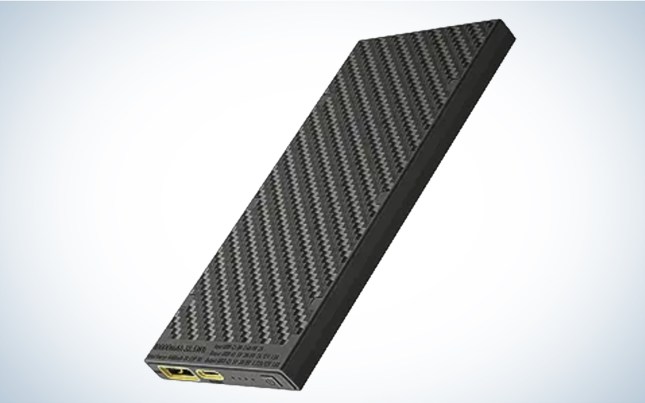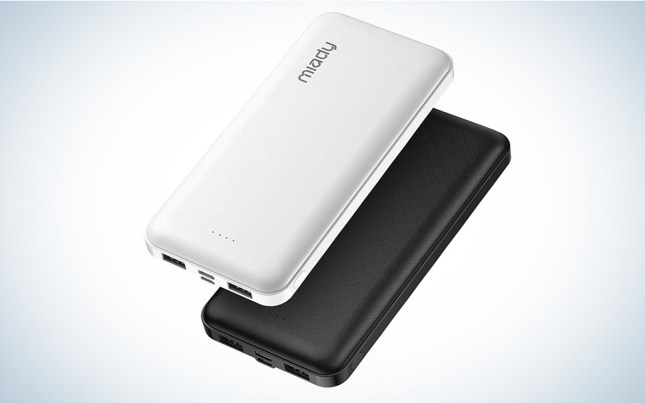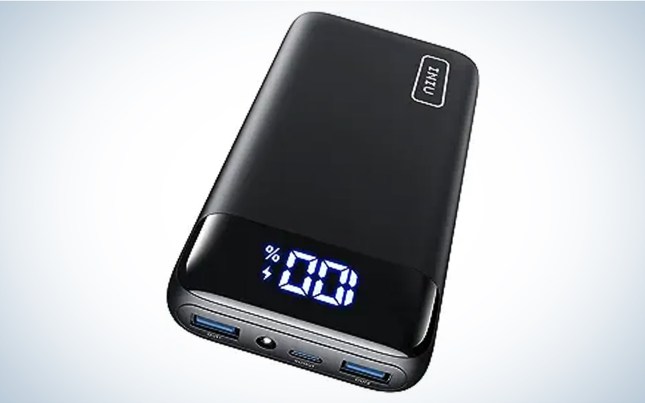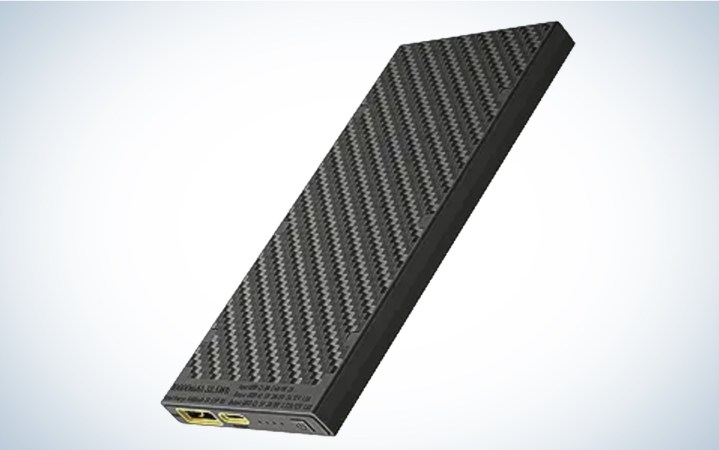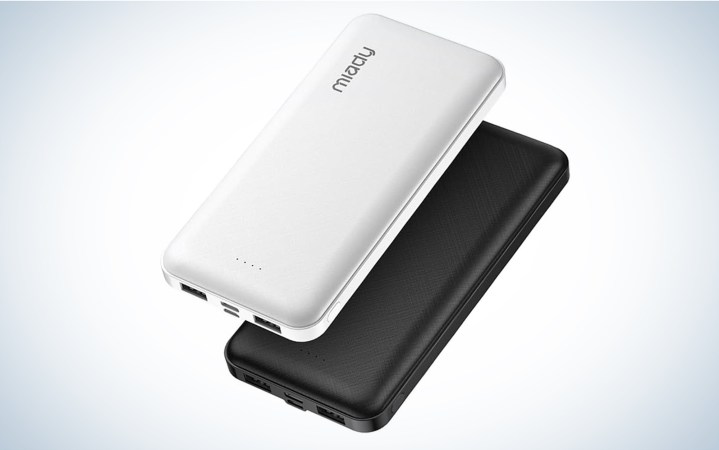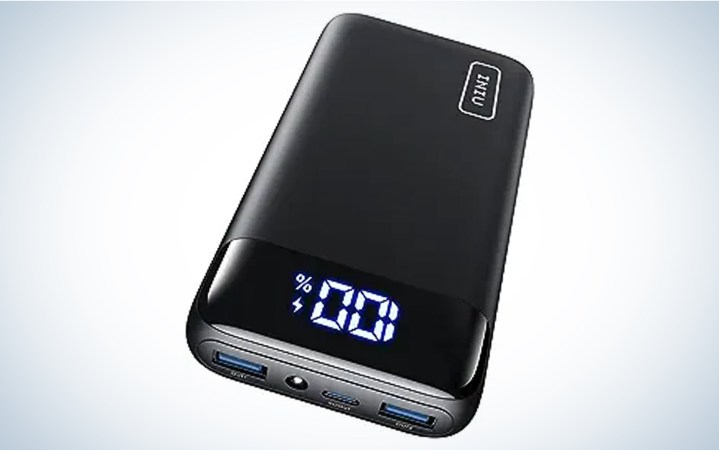We may earn revenue from the products available on this page and participate in affiliate programs. Learn More ›
For most backpackers and backpack hunters, a reliable lightweight power bank is fast becoming a must-have when heading into the backcountry. There are just too many electronics that we rely on for both our safety and comfort: smartphones, satellite messengers, headlamps, and more. To help you find the best lightweight power bank for your needs, I tested three different models to assess how much usable power they could hold under different scenarios, their durability, charging speed, and additional features.
- Best Ultralight: Nitecore NB 10000 Gen2
- Best Value: Miady AS-TPB21
- Best Features: Inui Power Bank BI-B6
How I Tested the Best Power Banks for Backpacking
For consumers, the three metrics that are the most important are weight, charging speed, and usable power. While it’s fairly easy to assess the first two on this list, the latter can depend on a number of factors, including temperature, day-to-day use, and age. For this test, I looked at the usable power in each power bank, both out of the box, and after subjecting it to a series of tests designed to negatively impact its battery life. I then rechecked each power bank after each test to see how much usable power was in it, as measured in watt hours.
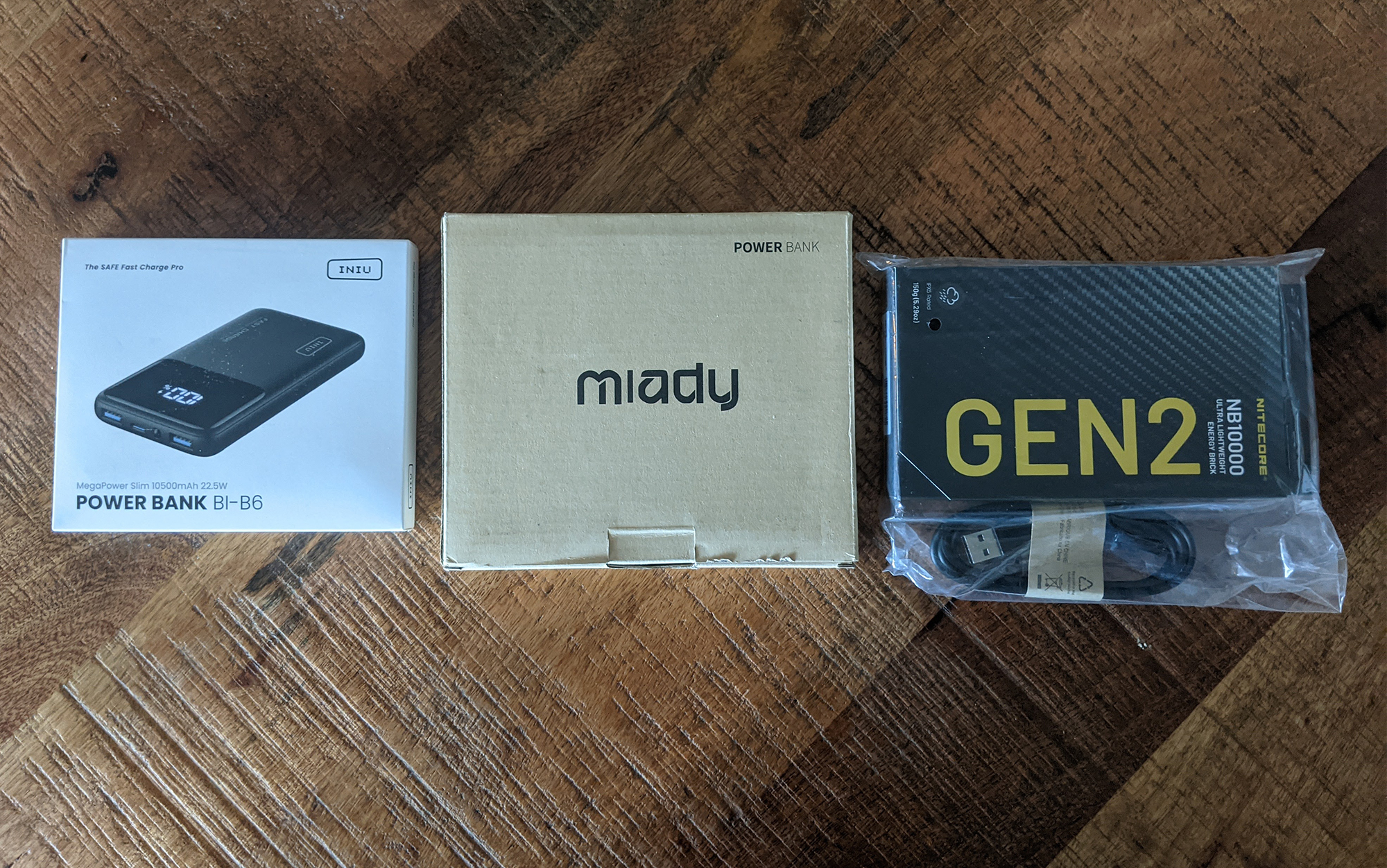
Testing Useable Power
I started by checking what charge each of the batteries had in it out of the box. After making note of that, I filled each up to 100 percent. Then I hooked the three power banks to a Anker 737, which provides detailed information about energy input and output, including watt hours.
For this test, I used the power cords that the power banks came packaged with.
| Power Bank | Cost | Weight (ounces) | Claimed Capacity | Testing Results | |||||
| Claimed | Tested | Charging Speed | Out of the Box Test | Overcharging Test | Overnight Fridge Test | Drop Test | |||
| Inui Power Bank BI-B6 | $30 | 7.4 | 7.5 | 38.8Wh | 4 to 13 watts | 26Wh | 27Wh | 25wh | Pass |
| Miady AS-TPB21 | $22 (two pack) | 7.7 | 7.9 | 37Wh | 11 watts | 23Wh | 24Wh | 30Wh | Pass |
| Nitecore NB 10000 Gen2 | $60 | 5.3 | 5.4 | 38.5Wh | 7.5 to 8 watts | 24Wh | 27Wh | 25Wh | Pass |
While the power banks in this test were all around 10,000mAh, the actual usable power in them is better measured in watt hours, which was also supplied by the manufacturer in the specifications in each user manual. During testing, the usable power of each power bank was found to be about two thirds the stated watt hour capacity.
Here’s a quick table putting this in the context of some of the most popular smartphones on the market.
| Popular Smartphones | Watt Hours per Charge | Average watt hours in a 10,000 mAh battery | Charges per phone |
| Samsung S10 | 15.5Wh | 25Wh | 1.6 charges |
| Pixel 8 | 22.8Wh | 25Wh | 1.1 charges |
| iPhone 15 | 13.0Wh | 25Wh | 1.9 charges |
| iPhone 13 | 15.5Wh | 25Wh | 1.6 charges |
Overcharge and Temperature Stability Test
The initial test looked at how many watt hours each battery could hold out of the box. The next test was to see if overfilling the battery damaged its capacity. For this test, I simply left all three batteries plugged in overnight. The next day, I tested again to see how many watt hours they were holding. After recharging the batteries a third time, I stuck them in my fridge for 12 hours. After that, I checked to see how many watt hours they were holding.
Drop Test
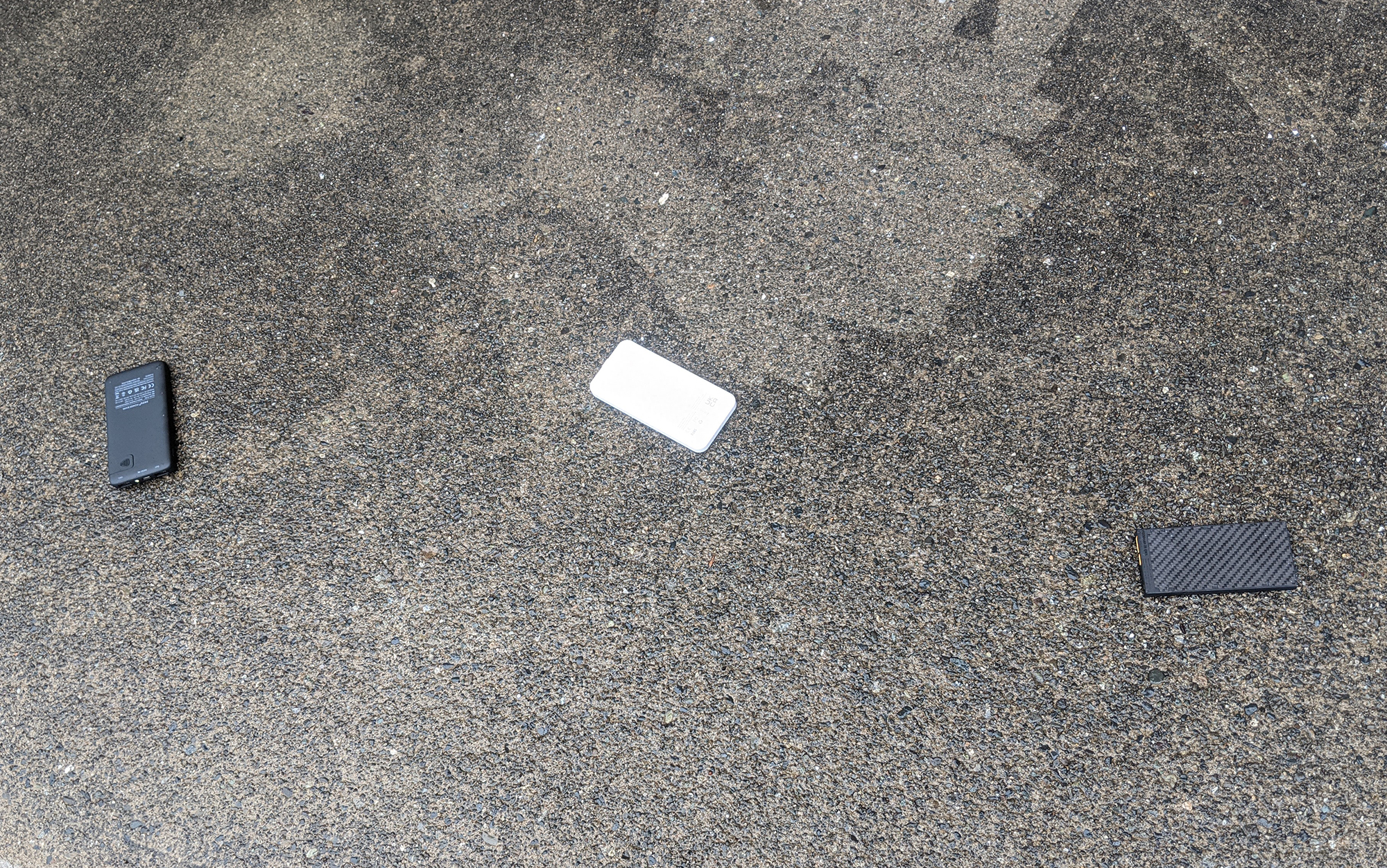
While the batteries were still essentially empty, I headed outdoors. I tossed each power bank from about shoulder height onto the pavement, aiming for about five feet of distance. I then dropped the batteries straight down, aiming to hit it against the most vulnerable spot on the power bank. This was meant to simulate a pretty bad drop onto the ground, but not a true torture test. I then took each battery back inside and checked that they were still capable of charging and discharging, and assigned each a pass/fail.
Best Lightweight Power Banks: Reviews & Recommendations
Best Ultralight: Nitecore NB 10000 Gen2
Best Ultralight
Nitecore NB 10000 Gen2
Key Features
- Weight: 5.4 ounces (as measured)
- Average Watt Hours Held During Testing: 25
- Drop Test: Pass
- One USB-A port and one USB-C port
Pros
- Over two ounces lighter than the other lightweight power banks I looked at
- Showed minimal damage during the drop tests
- IPX5 rated
Cons
- Had the lowest watt hour average across all three tests
It’s not just ultralight backpackers anymore: Everyone is looking for every last ounce they can squeeze out of their setup. So that’s why I was excited to see the Nitecore NB 10000 Gen2. This sleek unit weighed over 2 ounces less than the other power banks I tested. Typically, you’d expect that to come with a durability hit, but the carbon fiber shell helped protect the edges during the drop test. The Nitecore had visibly less scuffing (although not no scuffing) compared to the other two units I looked at.
However, as with all things ultralight, you’re paying a premium to save those 2 ounces. The Nitecore NB 10000 Gen2 costs twice as much as the next most expensive product I tested. Worse, during testing, it held slightly less power than the other two units, although not so much less that I would question its 10,000mAh claim.
While this power bank is rated IPX5, meaning it should be just fine if you leave it in a rainstorm, I’d be wary of doing this too often as there is no attached cover for the USB ports.
Best Value: Miady AS-TPB21
Best Value
Miady AS-TPB21
Key Features
- Weight: 7.9 ounces
- Average Watt Hours Held During Testing: 25
- Drop Test: Pass
- Two USB-A ports, one Micro USB port, and one USB-C port
Pros
- Very affordable
- Two for one
Cons
- Case showed signs of wear after the drop test
The lightweight Miady AS-TPB21 was not only the least expensive option I tested, it was even a two-for-one deal, making it a total steal. That’s the kind of budget option that typically proves lacking during testing. But not so with the Miady. It performed just as well, if not better, then the other two lightweight power banks I tested at, and even had the highest watt hour recording (30 watt hours, after the fridge test, inexplicably).
If I had to ding the Miady AS-TPB21 on something, it’s that it showed the most signs of wear after the drop test. In addition to the slightly scuffing around the edges of the unit, you can see that the case is slightly starting to separate. Treat this one a little more gingerly, but at least you’ll have a second one on hand if it does break.
Best Features: Inui Power Bank BI-B6
Best Features
Inui Power Bank BI-B6
Key Features
- Weight: 7.5 ounces
- Average Watt Hours Held During Testing: 26WH
- Drop Test: Pass
- Two USB-A ports and one USB-C port
Pros
- Better reading of how much power is left in the unit
- Held about one more watt hour than the competition
- Integrated flashlight
- Affordable
Cons
- Occasionally had trouble charging
A few blue LED lights is not a lot of information as to how much juice is left in your lightweight power bank. So I appreciated that the Inui Power Bank BI-B6 showed the percent of the battery that was in use. It also had a built-in flashlight (activated by holding down the power button for several seconds), and a kickstand that can be used to prop up your phone while it’s charging. These are all nice touches that can make the experience of using a lightweight power bank more pleasant.
Unfortunately, I occasionally had issues with the Inui Power Bank BI-B6 when attempting to charge it. For my test, I used the USB-A to USB-C that all three power banks came with and, in this instance, that pairing resulted in a few instances of checking in on the power bank after a few hours only to find that it hadn’t charged at all. Unplugging and replugging it in several times typically fixed the issue, but this may be a dealbreaker for some individuals.
Things to Consider Before Buying a Lightweight Power Bank
Weight
The weight of a lightweight power bank will likely be a tradeoff with either cost, or potential energy output, or both. Consider your other needs first before making a final decision about what weight is acceptable.
Cost
With power banks and other electronics, you typically get what you pay for. If you want a power bank that will have a longer, more reliable lifespan, plan to spend a little more money.
Energy Potential
While power banks often advertise their mAh (milleampre hour), I’d encourage you to look for the stated watt hours. That’s because the energy potential of mAh typically depends on using a lower voltage than most smartphones or other modern electronics use. The watt hours will give you a better comparative sense of the actual energy output of a power bank. It’s also how the best solar generators measure energy output.
Cords
During my time testing the best power banks for camping and the best lightweight power banks, I have been surprised at how many of them come with USB-A to USB-C cables that are, frankly, garbage. I’d plan on purchasing a separate one from a company like Anker or Goal Zero to ensure you don’t inadvertently damage your phone or other electronics.
Read Next: The Best Solar Generators of 2023, Tested and Reviewed
Why Trust Outdoor Life?
Since 1898, OL has been a leading authority in testing and reviewing hunting gear, fishing tackle, guns and shooting equipment, and much more. We have more than a century-long history of evaluating products, and we’re now bringing that expertise to online reviews. Our editors are experienced outdoorsmen and women, and most importantly, we’re trained journalists. We prioritize field testing and objective data when reviewing products. We conduct interviews with gear manufacturers and engineers as well as outdoor experts so that our readers have an understanding of how and why a product works—or doesn’t.
Advertising does not influence our gear reviews and it never will. While we always focus our coverage on standout products—because we want our readers to be aware of the latest and greatest gear—we also cover the flaws and quirks of any given product.
Final Thoughts on the Best Power Banks for Backpacking
A power bank for backpacking has many uses, from trail running to throwing in your bag for your daily rounds. The testing done for this story provides some guidance on how reliable the claimed energy potential of a few of the top models of power banks are. Which choice is right for you depends on your current needs and priorities.
- Best Ultralight: Nitecore NB 10000 Gen2
- Best Value: Miady AS-TPB21
- Best Features: Inui Power Bank BI-B6
